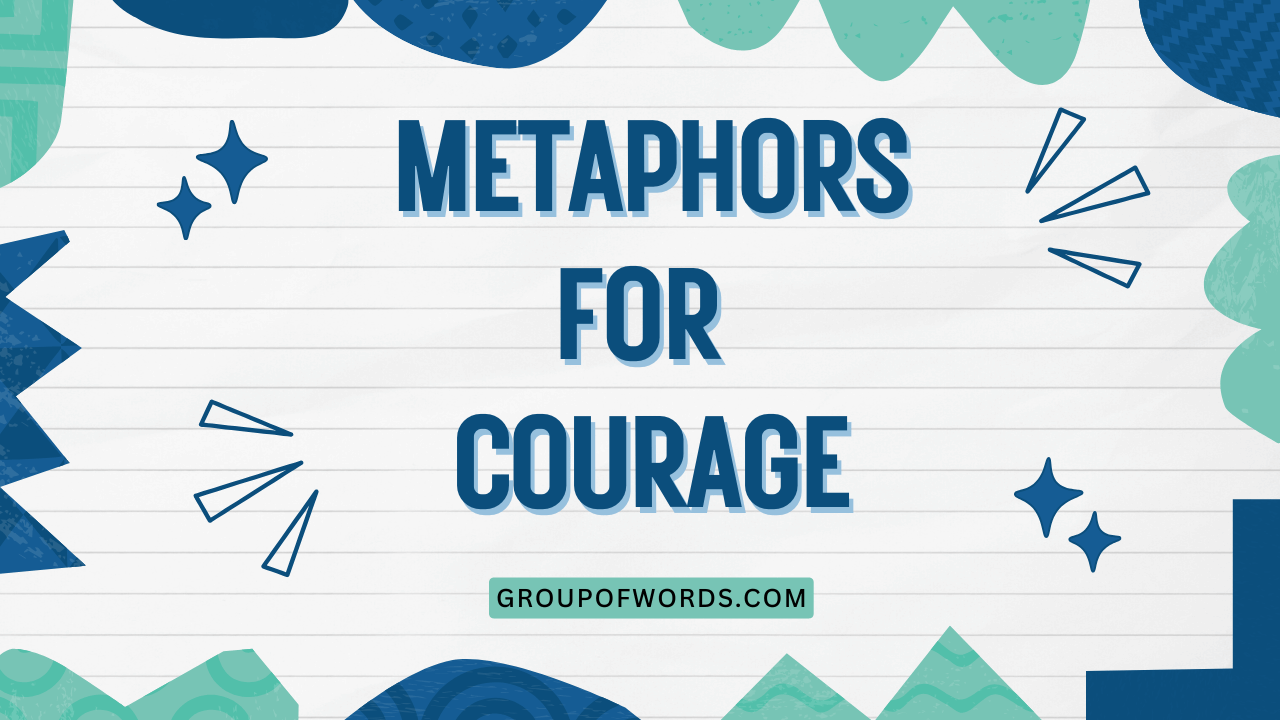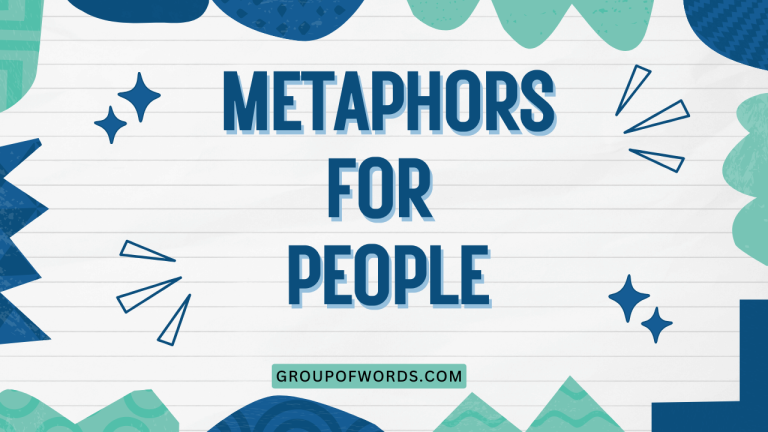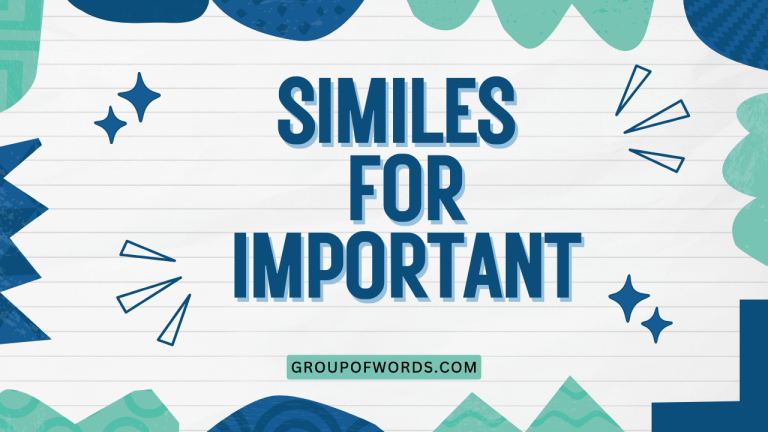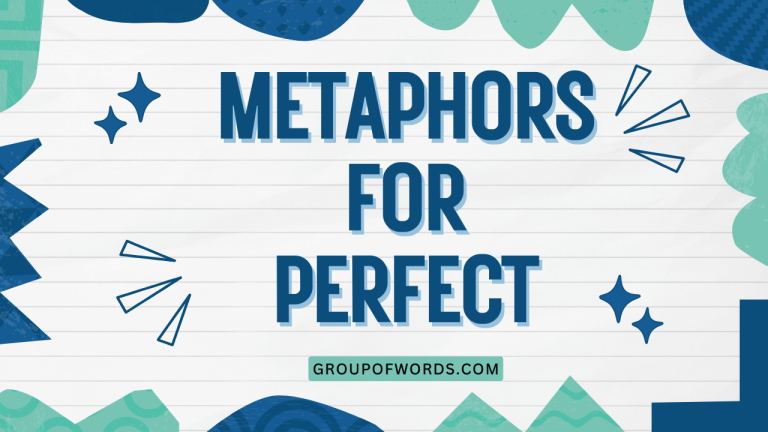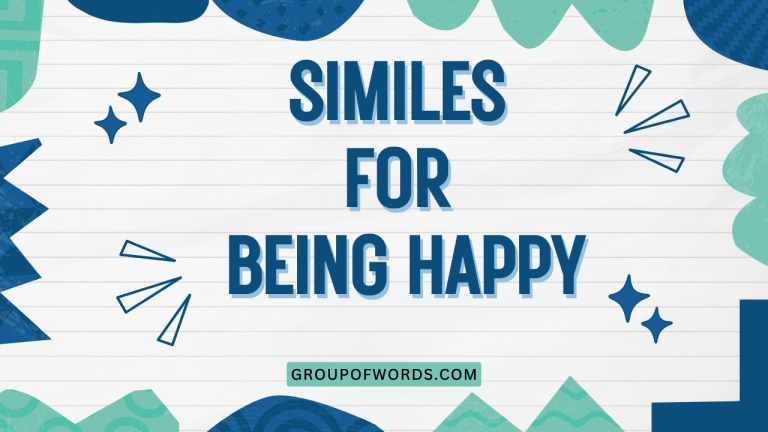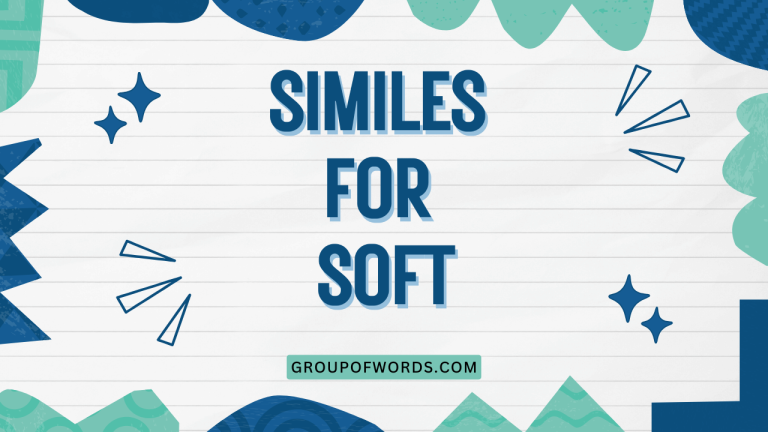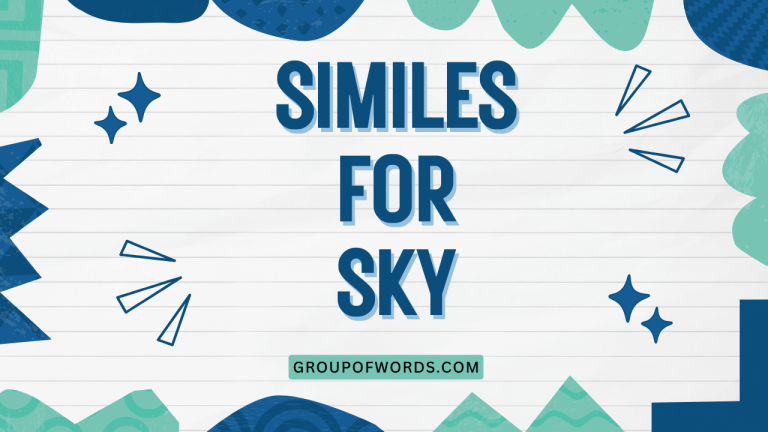Metaphors for Courage: A Comprehensive Guide
Understanding metaphors for courage enriches our comprehension of the English language and enhances our ability to express complex ideas vividly. Courage, an abstract concept, becomes more tangible and relatable when described through figurative language.
This article delves into the various metaphors used to represent courage, exploring their meanings, structures, and applications. This guide benefits students, writers, and anyone aiming to improve their expressive skills and linguistic accuracy.
By mastering these metaphors, you can elevate your writing, articulate nuanced emotions, and appreciate the creative power of language. Whether you’re preparing for an exam, crafting a novel, or simply expanding your vocabulary, this exploration of metaphors for courage will provide valuable insights and practical tools.
Table of Contents
- Introduction
- Definition of Metaphor and Courage
- Structural Breakdown of Courage Metaphors
- Types of Courage Metaphors
- Examples of Metaphors for Courage
- Usage Rules for Metaphors of Courage
- Common Mistakes When Using Courage Metaphors
- Practice Exercises
- Advanced Topics in Metaphors for Courage
- Frequently Asked Questions
- Conclusion
Definition of Metaphor and Courage
A metaphor is a figure of speech that directly compares two unrelated things. It asserts that one thing *is* another, not just *like* another, to reveal a shared quality or characteristic. Unlike similes, which use words like “like” or “as,” metaphors create a more implicit and powerful connection.
Courage, on the other hand, is the ability to confront fear, pain, danger, uncertainty, or intimidation. It is often associated with bravery, valor, and resilience. It’s a multifaceted concept encompassing physical, moral, and emotional strength.
When we talk about metaphors for courage, we are using figurative language to describe this abstract quality through concrete, relatable terms. This helps us understand and appreciate the complexity of courage in a more vivid and engaging way.
Structural Breakdown of Courage Metaphors
Metaphors for courage typically involve two main components: the tenor (the subject being described, which is courage) and the vehicle (the object or concept used to represent courage). The vehicle lends its qualities to the tenor, creating a new understanding of courage.
The effectiveness of a courage metaphor depends on the strength of the connection between the tenor and the vehicle. A well-chosen vehicle will resonate with the audience and provide a fresh perspective on the nature of courage.
For example, describing courage as “a lion’s heart” uses the vehicle (lion’s heart) to highlight the bravery and strength (tenor – courage) associated with lions.
Consider the metaphor “He was a rock in the face of adversity.” Here, “he” (demonstrating courage) is the tenor, and “a rock” is the vehicle, implying steadfastness and resilience.
Types of Courage Metaphors
Metaphors for courage can be categorized based on the type of vehicle used. Common categories include animal metaphors, natural element metaphors, object metaphors, physical metaphors, and abstract metaphors.
Animal Metaphors
Animal metaphors draw parallels between courage and the perceived traits of certain animals. These metaphors often evoke images of strength, bravery, and resilience.
Lions, tigers, bears, and eagles are frequently used to represent courage due to their association with power and fearlessness.
Natural Element Metaphors
Natural element metaphors use aspects of nature to symbolize courage. Mountains, storms, and fire can represent the strength, resilience, and transformative power of courage.
These metaphors often highlight the ability to withstand challenges and emerge stronger.
Object Metaphors
Object metaphors employ inanimate objects to embody courage. Shields, swords, and fortresses can symbolize protection, defense, and unwavering resolve.
These metaphors often emphasize the practical and tangible aspects of courage.
Physical/Bodily Metaphors
Physical metaphors relate courage to bodily attributes or actions. A “strong backbone” or “steeling oneself” are examples of how physical resilience is used to represent the mental and emotional fortitude of courage.
These metaphors make courage a tangible, felt experience.
Abstract Metaphors
Abstract metaphors use intangible concepts to represent courage. Courage as “a beacon of hope,” “a wellspring of strength,” or “an unwavering flame” illustrates its inspirational and sustaining qualities.
These metaphors often tap into deeper emotional and philosophical understandings of courage.
Examples of Metaphors for Courage
The following tables provide extensive examples of metaphors for courage, organized by the categories discussed above. Each example illustrates how the vehicle is used to convey a specific aspect of courage.
Animal Metaphors for Courage
This table presents a wide array of animal metaphors used to describe courage, highlighting the specific qualities each animal represents.
| Metaphor | Explanation |
|---|---|
| Lionheart | Represents bravery, boldness, and fearless leadership. |
| Brave as a bear | Implies immense strength, resilience, and unwavering determination. |
| Eagle spirit | Symbolizes soaring above challenges with clear vision and unwavering resolve. |
| Tiger’s tenacity | Suggests fierce determination, relentless pursuit, and unwavering focus. |
| Wolf’s resilience | Represents surviving against all odds, adaptability, and unwavering pack loyalty. |
| The heart of a lioness | Symbolizes fierce protectiveness, maternal courage, and unwavering devotion. |
| A bulldog’s grip | Implies unwavering determination, tenacity, and refusal to give up. |
| The courage of a honey badger | Represents fearlessness, audacity, and a relentless attitude. |
| The spirit of a phoenix | Symbolizes resilience, rebirth, and the ability to rise from ashes. |
| A hawk’s unwavering gaze | Implies focus, determination, and a clear vision of one’s goals. |
| The stamina of a warhorse | Symbolizes endurance, strength, and unwavering commitment to duty. |
| As fearless as a cobra | Represents boldness, audacity, and a willingness to confront danger directly. |
| The heart of a grizzly | Implies raw power, unwavering determination, and a protective nature. |
| The courage of a salmon swimming upstream | Symbolizes determination, perseverance, and overcoming obstacles. |
| A cheetah’s relentless chase | Represents unwavering focus, speed, and determination to achieve goals. |
| The fortitude of an elephant | Symbolizes immense strength, resilience, and a long memory. |
| Like a pack of wolves facing a blizzard | Represents collective courage, resilience, and mutual support in adversity. |
| The unwavering loyalty of a guard dog | Implies steadfast devotion, protection, and unwavering commitment. |
| The bravery of a cornered rat | Represents desperate courage, fighting back when there is nothing left to lose. |
| The spirit of a Mockingjay | Symbolizes rebellion, defiance, and unwavering commitment to justice. |
| The heart of a dragon | Implies immense power, strength, and a fiery spirit. |
| The courage of a fire ant | Represents collective strength, determination, and unwavering commitment to the colony. |
| The resilience of a cockroach | Symbolizes the ability to survive in harsh conditions, adapt, and persevere. |
| The tenacity of a badger | Implies relentless determination, persistence, and refusal to back down. |
Natural Element Metaphors for Courage
This table explores metaphors that use natural elements to describe courage, emphasizing resilience, strength, and transformative power.
| Metaphor | Explanation |
|---|---|
| A mountain of courage | Represents unwavering strength, stability, and resilience. |
| Storm of bravery | Implies overwhelming force, intensity, and a transformative impact. |
| Unwavering flame | Symbolizes passion, determination, and an enduring spirit. |
| Solid as bedrock | Suggests steadfastness, reliability, and unwavering foundation. |
| A tidal wave of resolve | Represents unstoppable force, overwhelming determination, and a sweeping impact. |
| The strength of a hurricane | Symbolizes immense power, resilience, and the ability to overcome obstacles. |
| A beacon in the darkness | Represents hope, guidance, and unwavering light in challenging times. |
| The resilience of bamboo | Symbolizes flexibility, adaptability, and the ability to bend without breaking. |
| Like a mighty oak | Implies strength, endurance, and deep roots that withstand storms. |
| A river of determination | Represents constant flow, unstoppable progress, and unwavering direction. |
| As immovable as a glacier | Symbolizes relentless force, slow but steady progress, and unwavering resolve. |
| A forest of fortitude | Represents collective strength, resilience, and unwavering support. |
| The heart of a volcano | Implies hidden power, explosive potential, and transformative energy. |
| Like the sun rising after a storm | Symbolizes hope, renewal, and the ability to overcome adversity. |
| The depth of the ocean | Represents vastness, mystery, and the ability to withstand immense pressure. |
| As steady as the North Star | Symbolizes guidance, direction, and unwavering commitment to one’s path. |
| The tenacity of a desert flower | Implies resilience, adaptability, and the ability to thrive in harsh conditions. |
| A geyser of courage | Represents sudden bursts of bravery, unexpected strength, and powerful impact. |
| The unwavering strength of the earth | Symbolizes stability, grounding, and the ability to withstand immense pressure. |
| Like a lighthouse in the fog | Represents clarity, guidance, and unwavering support in confusing times. |
| The resilience of a willow | Symbolizes flexibility, grace under pressure, and the ability to adapt to change. |
| A spring of hope | Represents renewal, optimism, and unwavering belief in the future. |
| Like a river carving through stone | Implies perseverance, determination, and the ability to overcome obstacles over time. |
| The unwavering power of gravity | Symbolizes constancy, reliability, and an unbreakable force. |
Object Metaphors for Courage
This table provides examples of object metaphors used to symbolize courage, emphasizing protection, defense, and unwavering resolve.
| Metaphor | Explanation |
|---|---|
| A shield of bravery | Represents protection from harm, defense against adversity, and unwavering resolve. |
| Sword of valor | Implies strength, power, and the ability to fight for what is right. |
| Fortress of the soul | Symbolizes inner strength, resilience, and unwavering defense against challenges. |
| Unbreakable chain | Suggests unwavering commitment, solidarity, and unbreakable bond. |
| A solid anchor | Represents stability, security, and unwavering support in turbulent times. |
| The armor of conviction | Symbolizes protection from doubt, unwavering belief, and inner strength. |
| A bridge over troubled waters | Represents connection, support, and the ability to overcome obstacles. |
| The compass of integrity | Symbolizes guidance, direction, and unwavering commitment to moral principles. |
| Like a sturdy ship in a storm | Implies resilience, stability, and the ability to weather challenges. |
| A bedrock of principles | Represents unwavering foundation, moral strength, and steadfast commitment. |
| As solid as a diamond | Symbolizes resilience, strength, and unwavering beauty under pressure. |
| The ladder of ambition | Represents progress, perseverance, and the climb towards achieving goals. |
| The key to unlocking potential | Symbolizes opportunity, access, and the ability to achieve great things. |
| Like a cornerstone of society | Implies fundamental importance, stability, and unwavering support. |
| A tapestry of resilience | Represents interwoven strength, diverse experiences, and unwavering beauty. |
| The blueprint for success | Symbolizes planning, strategy, and the path to achieving goals. |
| As sharp as a blade | Implies focus, precision, and the ability to cut through obstacles. |
| A lighthouse of guidance | Represents direction, support, and unwavering commitment to helping others. |
| The cornerstone of freedom | Symbolizes fundamental importance, unwavering support, and the foundation of liberty. |
| Like a sturdy bridge connecting cultures | Implies connection, understanding, and the ability to overcome differences. |
| The foundation of trust | Symbolizes reliability, honesty, and unwavering commitment to relationships. |
| A tapestry woven with strength and grace | Represents resilience, beauty, and the ability to overcome challenges with dignity. |
| Like a sturdy wall protecting the innocent | Implies unwavering defense, protection, and commitment to justice. |
| The scaffolding of progress | Symbolizes support, structure, and the path towards achieving advancement. |
Physical Metaphors for Courage
This table displays physical metaphors that relate courage to bodily attributes or actions, emphasizing the tangible experience of mental and emotional fortitude.
| Metaphor | Explanation |
|---|---|
| Strong backbone | Represents unwavering resolve, moral strength, and the ability to stand up for beliefs. |
| Steeled oneself | Implies mental preparation, hardening resolve, and bracing for a challenge. |
| Iron will | Symbolizes unwavering determination, relentless focus, and unbreakable spirit. |
| Firm stance | Suggests confidence, conviction, and unwavering commitment. |
| A heart of steel | Represents resilience, emotional fortitude, and unwavering strength. |
| The muscle of perseverance | Symbolizes consistent effort, unwavering determination, and the ability to overcome obstacles. |
| A steady hand | Represents calmness, precision, and unwavering control in challenging situations. |
| The stamina of a long-distance runner | Symbolizes endurance, perseverance, and the ability to maintain effort over time. |
| Like a clenched fist | Implies determination, resolve, and unwavering commitment to a cause. |
| The breath of life | Represents vitality, energy, and unwavering spirit. |
| As resilient as a rubber band | Symbolizes flexibility, adaptability, and the ability to bounce back from setbacks. |
| The grit of a fighter | Represents determination, tenacity, and unwavering commitment to victory. |
| The strength of a weightlifter | Symbolizes power, resilience, and the ability to overcome heavy burdens. |
| Like a rock-solid foundation | Implies stability, reliability, and unwavering support. |
| The armor of resilience | Represents protection from adversity, unwavering strength, and the ability to bounce back. |
| The steady gaze of a marksman | Symbolizes focus, precision, and unwavering commitment to one’s goals. |
| As unyielding as a mountain | Symbolizes strength, stability, and unwavering resistance to pressure. |
| The unwavering pulse of life | Represents vitality, energy, and unwavering commitment to living fully. |
| Like a well-oiled machine | Implies efficiency, precision, and unwavering performance under pressure. |
| The backbone of the community | Symbolizes support, strength, and unwavering commitment to collective well-being. |
| The iron grip of determination | Represents unwavering focus, relentless pursuit, and unbreakable spirit. |
| Like a compass pointing north | Implies direction, guidance, and unwavering commitment to one’s path. |
| The unwavering stride of progress | Symbolizes forward movement, advancement, and relentless pursuit of goals. |
| The strength of a blacksmith’s hammer | Represents power, precision, and the ability to shape one’s destiny. |
Usage Rules for Metaphors of Courage
When using metaphors for courage, consider the following rules:
- Clarity: Ensure the metaphor is easily understood and resonates with your audience. Avoid obscure or overly complex comparisons.
- Relevance: The vehicle should have a clear connection to the tenor (courage). The shared qualities should be apparent and meaningful.
- Consistency: Maintain consistency in your figurative language. Avoid mixing metaphors that create conflicting images.
- Originality: Strive for fresh and creative metaphors. Overused metaphors can become clichés and lose their impact.
- Context: Consider the context in which the metaphor is used. A metaphor that works in one situation may not be appropriate in another.
Common Mistakes When Using Courage Metaphors
Learners often make mistakes when using metaphors for courage. Here are some common errors and how to avoid them:
- Mixing Metaphors: Combining incompatible images.
- Incorrect: “He was a lionheart navigating a sea of troubles, but his ship was a sinking stone.”
- Correct: “He was a lionheart navigating a sea of troubles.”
- Correct: “He was a steadfast ship navigating a sea of troubles.”
- Using Clichés: Relying on overused and predictable metaphors.
- Incorrect: “He was as brave as a lion.”
- Correct: “He possessed the ferocity of a cornered tiger.”
- Lack of Clarity: Employing metaphors that are confusing or difficult to understand.
- Incorrect: “His courage was a chromatic dissonance.”
- Correct: “His courage was a beacon in the darkness.”
- Inappropriate Tone: Using metaphors that don’t match the tone of the writing.
- Incorrect (in a serious context): “He was a brave little toaster.”
- Correct: “He displayed the unwavering resolve of a seasoned warrior.”
Practice Exercises
Test your understanding of metaphors for courage with these exercises.
Exercise 1: Identifying Metaphors
Identify the metaphor in each sentence and explain what aspect of courage it represents.
| Question | Answer |
|---|---|
| 1. Her courage was a lighthouse guiding others to safety. | Metaphor: Lighthouse. Represents guidance, hope, and unwavering support. |
| 2. He faced his fears with a mountain of resolve. | Metaphor: Mountain. Represents strength, stability, and resilience. |
| 3. She possessed the tenacity of a honey badger. | Metaphor: Honey badger. Represents fearlessness, audacity, and relentless attitude. |
| 4. His spirit was an unwavering flame in the face of adversity. | Metaphor: Unwavering flame. Represents passion, determination, and enduring spirit. |
| 5. The activist’s voice was a sword of justice. | Metaphor: Sword. Represents strength, power, and fighting for what is right. |
| 6. Their solidarity was a fortress against oppression. | Metaphor: Fortress. Represents inner strength, resilience, and defense against challenges. |
| 7. The survivor’s story was a beacon of hope for many. | Metaphor: Beacon. Represents guidance, hope, and unwavering support. |
| 8. His determination was a river carving through rock. | Metaphor: River. Represents constant flow, unstoppable progress, and unwavering direction. |
| 9. She approached the challenge with an iron will. | Metaphor: Iron will. Represents unwavering determination, relentless focus, and unbreakable spirit. |
| 10. His resilience was like a sturdy oak weathering the storm. | Metaphor: Sturdy oak. Represents strength, endurance, and deep roots that withstand storms. |
Exercise 2: Completing Metaphors
Complete the following sentences by adding a suitable metaphor for courage.
| Question | Answer |
|---|---|
| 1. Despite the challenges, his spirit remained __________. | His spirit remained an unwavering flame. |
| 2. Faced with adversity, she became __________. | Faced with adversity, she became a mountain of strength. |
| 3. His courage was __________, inspiring everyone around him. | His courage was a beacon of hope, inspiring everyone around him. |
| 4. The team’s resolve was __________, never faltering under pressure. | The team’s resolve was an unbreakable chain, never faltering under pressure. |
| 5. In the face of danger, he showed __________. | In the face of danger, he showed the heart of a lion. |
| 6. Her bravery was __________, protecting those who couldn’t protect themselves. | Her bravery was a shield of compassion, protecting those who couldn’t protect themselves. |
| 7. Despite the setbacks, their determination was __________. | Despite the setbacks, their determination was a river of resolve. |
| 8. He approached the task with __________. | He approached the task with an iron will. |
| 9. The community’s support was __________, helping them rebuild after the disaster. | The community’s support was a solid anchor, helping them rebuild after the disaster. |
| 10. Their courage shone __________, guiding them through the darkest times. | Their courage shone like a lighthouse, guiding them through the darkest times. |
Exercise 3: Creating Metaphors
Create your own metaphors for courage based on the following prompts.
| Prompt | Example Answer |
|---|---|
| 1. Describe courage as a natural phenomenon. | Courage is the dawn breaking after a long, dark night. |
| 2. Describe courage as an animal trait. | Courage is the unwavering gaze of an eagle soaring above the storm. |
| 3. Describe courage as a physical attribute. | Courage is the strong backbone that supports us when we falter. |
| 4. Describe courage as an abstract concept. | Courage is the unwavering belief in a brighter future. |
| 5. Describe courage as a tool. | Courage is the key that unlocks our potential. |
| 6. Describe courage as a landscape. | Courage is a mountain range, challenging yet rewarding to climb. |
| 7. Describe courage as a source of energy. | Courage is a wellspring of inner strength. |
| 8. Describe courage as a weather condition. | Courage is a hurricane’s force against injustice. |
| 9. Describe courage as a form of art. | Courage is a tapestry woven with threads of resilience and determination. |
| 10. Describe courage as a form of communication. | Courage is a voice that echoes through the silence of fear. |
Advanced Topics in Metaphors for Courage
For advanced learners, consider exploring the following topics:
- Extended Metaphors: Developing a single metaphor over an entire passage or poem.
- Subverted Metaphors: Using metaphors in unexpected or ironic ways to challenge conventional ideas about courage.
- Cultural Variations: Exploring how metaphors for courage differ across cultures and languages.
- The Role of Metaphor in Persuasion: Analyzing how metaphors can be used to inspire courage and motivate action.
Frequently Asked Questions
- What is the difference between a metaphor and a simile?
A metaphor directly equates two unlike things, while a simile uses “like” or “as” to make a comparison. Metaphors are more implicit and forceful, while similes are more explicit and descriptive. For example, “He is a lion” (metaphor) versus “He is brave like a lion” (simile).
- Why are metaphors for courage important?
Metaphors for courage make an abstract concept more tangible and relatable. They enrich our understanding of courage, add vividness to our language, and enhance our ability to express complex emotions and ideas.
- How can I create original metaphors for courage?
Start by identifying the key qualities of courage you want to emphasize. Then, brainstorm objects, animals, or concepts that share those qualities. Look for unexpected connections and try to create fresh and imaginative comparisons. Don’t be afraid to experiment and play with language.
- What are some common pitfalls to avoid when using metaphors?
Avoid mixing metaphors, using clichés, lacking clarity, and employing inappropriate tones. Ensure your metaphors are relevant, consistent, and easily understood by your audience. Strive for originality and consider the context in which the metaphor is used.
- Can metaphors for courage be used in everyday conversation?
Yes, metaphors for courage can be used in everyday conversation to add color and emphasis to your speech. However, be mindful of your audience and the context. Choose metaphors that are appropriate and easily understood.
- How do cultural differences affect metaphors for courage?
Cultural differences can significantly influence metaphors for courage. Different cultures may associate different animals, objects, or concepts with courage. Understanding these cultural nuances is essential for effective communication and avoiding misunderstandings. What is considered a courageous trait in one culture may not be in another.
- Are there any specific resources for learning more about metaphors?
Yes, many resources are available for learning more about metaphors. Books on figurative language, online grammar guides, and literary analysis websites can provide valuable insights and examples. Additionally, reading widely and paying attention to how metaphors are used in literature and media can enhance your understanding.
- How can I improve my ability to understand and use metaphors effectively?
Practice is key to improving your ability to understand and use metaphors effectively. Read widely, analyze metaphors in different contexts, and experiment with creating your own. Seek feedback from others and be open to learning from your mistakes. The more you engage with metaphors, the more natural and intuitive they will become.
Conclusion
Mastering metaphors for courage is a rewarding endeavor that enhances your linguistic skills and deepens your understanding of this vital human quality. By exploring the different types of metaphors, understanding their structural elements, and practicing their usage, you can express complex ideas more vividly and engage your audience more effectively.
Remember to avoid common mistakes, strive for originality, and consider the context in which your metaphors are used.
Continue to explore the rich tapestry of figurative language and embrace the creative power of metaphors. With practice and dedication, you can become a master of metaphorical expression, enriching your writing and communication skills for years to come.
The journey of linguistic exploration is a continuous one, and metaphors for courage are just one facet of this fascinating landscape.
